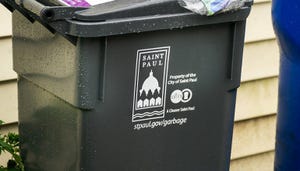As the latest New Source Performance Standards (NSPS) take effect later this month, many landfills will be regulated on their gas emissions for the first time.
Others will be mandated to run their gas collection systems significantly longer. Operators will have to move fast to come up with capital, and to figure out just what they have to do, to comply.
The federal law, which is an update of the emissions standards passed in 1996, lowers the nonmethane organic compound emissions (NMOC) threshold from 50 mega grams to 34 mega grams a year.
“Some sites that would never have to install gas emissions systems under the old rule will have to go from doing nothing to having to install full landfill gas and control systems,” says Patrick Sullivan, senior vice president of Long Beach, Calif-based SCS Engineers. The technology, he says, will come with a startup cost of about $500,000 for small landfills, and could be upward of $2 million for a midsize landfill.
Some midsized operations are at least part of the way there; they have systems in place. But the new threshold will push them over the edge sooner, requiring them to start their systems earlier. And those facilities will be running them longer since the same reduced threshold applies at end of life.
Who will be impacted and when?
It’s unclear how many landfills will impacted. For others that will be impacted, the timing is still hazy. The challenge is that there is no one rule or set date that applies to every site, nationwide.
There is the federal EPA legislation (NSPS) and there is a federal emission guideline, which is a blueprint for states and local air jurisdictions that take their authority from the EPA but write their own rules, based on federal guidelines.
“With the federal regulations [operators] have to comply right out of the gate with specified timelines. But those subject to state regulations don’t have to do anything until after EPA reviews and approves the rule prepared by the state,” Sullivan says. “It has taken 13 months to three years for the process to be completed and for states’ rules to be implemented.”
Gearing up for expedited timetables
A lot of operators are working to determine what to do about the sped-up timetables. And they have to figure out how to pay for major projects that lie ahead of them.
Installation and ongoing operational and monitoring costs will hit small landfills hardest, while big players have economies of scale on their side; their initial capital outlay is overall less expensive.
Some companies may be able to access low-interest rate loans for emission controls. Sullivan has also seen cases where energy developers, who want to turn landfill gas into energy, will pay for all or part of the system and or take gas as a tradeoff.
Industry stakeholders say it’s been a process trying to get regulators to see what it will take for operators to be able to comply.
“Landfill regulators often have never been to one of these sites … it’s challenging for them to fully understand what factors impact how we operate,” says Anne Germain, director of waste and recycling technology for the National Waste & Recycling Association. “They don’t retain for instance that landfills are area sources rather than point sources. So any uncontrolled emissions are not coming out of a pipe, but from the ground and are spread out over a huge area.”
Germain brought members of the Small Business Administration, charged with reviewing the federal rule, to a landfill to shed light on their scenario.
“They could look and say, yes, I see how this could be more challenging than if you just had a valve you could turn,” she says. “Emissions are controlled, but they could see it’s complex. …We argued strongly that operating with lower thresholds would call for increased flexibility in the way we operate.”
While the final rule provides some flexibility, she adds, “It was not the degree of flexibility we hoped for, and it remains to be seen how useful it will be.”
SCS is looking to determine how its clients will be captured by the rules and when.
“We are working to get clients through what they are subject to now and what they will be subject to in the future. And we are providing timelines so they can prepare for what they need to do at different points,” says Sullivan.
[Landfills] will have to file reports and see if they are subject to regulations and will also have to file NMOC estimates. If estimates are below the threshold you are done, and don’t have to install a gas system—at least for another year.
About the Author(s)
You May Also Like




